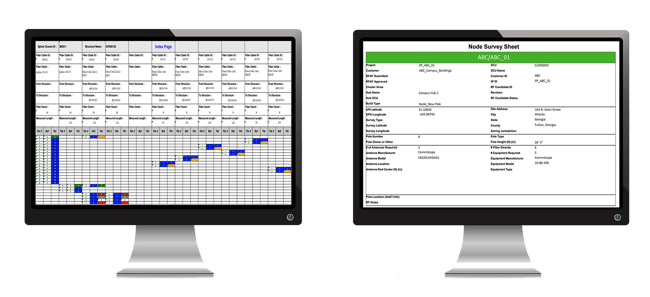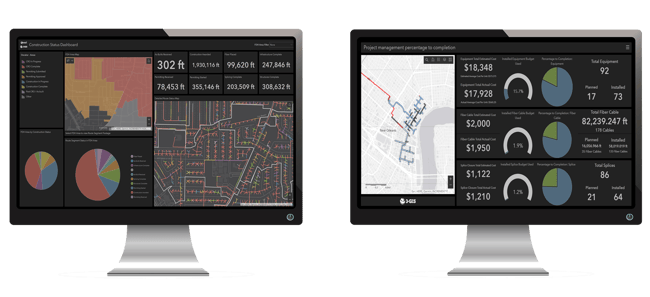Proprietary data structures and closed vendor ecosystems of yesteryear are out-of-date. Today’s enterprise applications are increasingly defined on standard data structures. It’s all about openness and collaboration.
Telecom companies often focus on how hard or easy it is to get data into an asset management system - rightfully so considering ease of use is key to user adoption and quality data. But is the potential pain of adopting a new system really worth the reward? Our easy answer: yes.
An outside plant asset management system built on a non-proprietary data structure can support a full analytic workflow - from data preparation and ingestion to visual exploration and insight generation.
Reports
It is equally important to implement a system that meets the ever-growing demand for easily accessible data and actionable business intelligence. Having open and easy access to build reports of the physical inventory data is essential to predicting trends in the market in order to outpace the competition, keep inline with regulations, and anticipate customer needs. Business intelligence systems can achieve this goal, but only if fed the necessary data.
As indicated by a 24.4% growth in BI software utilization in the telecom sector, providers are learning how to leverage data as an asset. To bring this idea to life, consider the following example: For service providers to succeed, it is essential for them to both acquire new customers and increase the yield from their current ones. To determine the possible ROI of a prospective customer, service providers and their vendors must be able to quantify the costs of construction to and turn-up of this new customer, as well as serving them over their customer lifetime. The results from this kind of report can inform their decisions on where to expand existing services, where to offer new services first, and where to target for long-term growth.
Sounds great right? But these results can only be obtained if the data necessary to inform them is easily available. Choosing an asset management system built on a non-proprietary data structure allows users throughout the enterprise to use COTS business intelligence applications like Crystal Reports, Jasper Reports, Tableau, and more that read Oracle, Postgre, and SQL to connect the database and produce quality reports, like the ones below, without integrations or customization.

Dashboards
Beyond creating the reports, it is important that the reports and insights pulled can be used throughout an entire enterprise, from marketing to assurance to finance. This is where dashboards become a strategic benefit to the organization. 3-GIS customers specifically leverage Esri dashboards, like the one below, for executive overviews of KPIs. Dashboards can highlight opportunities for additional revenue, project tracking, network utilization, and more. With browser-accessible dashboards, everyone within the organization can be prepared to make an impact where and when they are needed.

Want the CliffsNotes version? With outside plant asset management reports and dashboards, your organization can:
> Have fast, efficient, and agile reactions when a problem occurs
> Create a competitive edge by knowing the status of the market
> Demonstrate the success and completion of projects
> Determine the where to expand the market
> Improve conversations by focusing on facts over subjective experiences
> Reduce the stress of being uninformed
Want to learn more about getting the most value from your OSP data?
Register for our upcoming webinar to hear more about taking your data to the next level with reports and dashboards.



